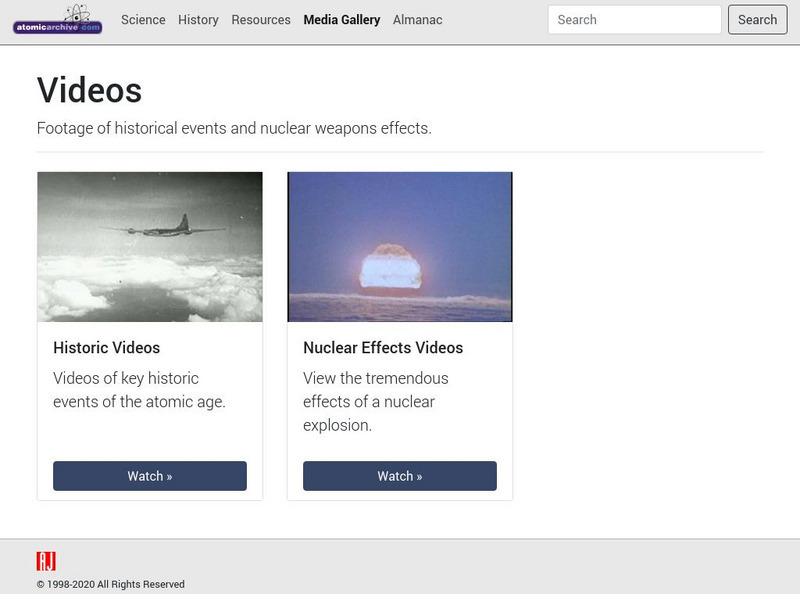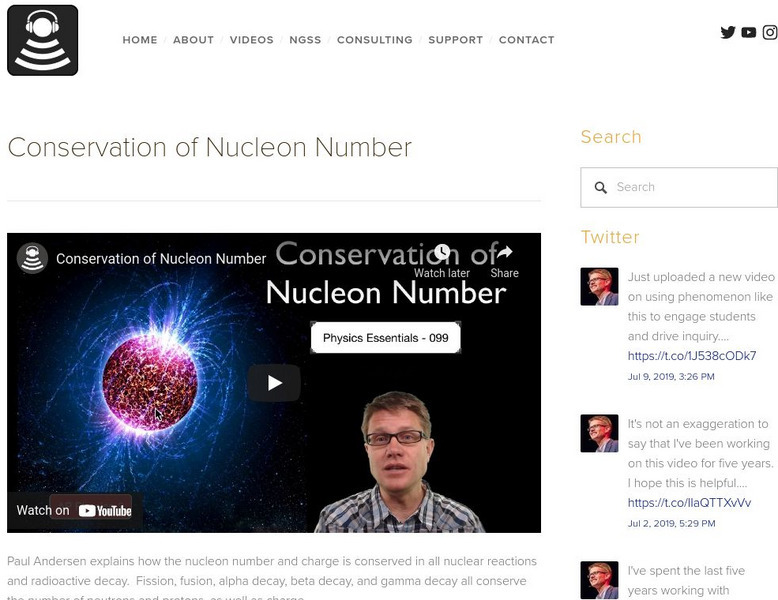MinutePhysics
The Unreasonable Efficiency of Black Holes
This video is about how efficient various reactions are at converting mass to energy (as we know from the Einstein mass-energy equivalence of E=mc^2). Antimatter is very efficient but it is not naturally-occurring. Chemical reactions...
MinutePhysics
The Twins Paradox Hands-On Explanation | Special Relativity Ch. 8
This video is chapter 8 in my series on special relativity, and it presents a hands-on explanation of the resolution to the Twins Paradox using the mechanical minkowski diagram, aka mechanical Lorentz transformation, aka spacetime globe....
TED Talks
David Deutsch: A new way to explain explanation
For tens of thousands of years our ancestors understood the world through myths, and the pace of change was glacial. The rise of scientific understanding transformed the world within a few centuries. Why? Physicist David Deutsch proposes...
Bozeman Science
Nuclear Reactions
Mr. Andersen contrasts nuclear reactions to chemical reactions. He explains the four main forces of nature; including gravity, electromagnetism, strong, and weak nuclear forces. He also explains how fusion differs from fission.
Curated Video
The Sun - Our Star
Our Sun is a medium sized star, which creates the perfect conditions for life on Earth. What happens on the Sun and how do stars, including the Sun, live and die? Physics - Our Solar System - Learning Points. The Sun is 4.6 billion years...
Curated Video
Black Holes
Discover how dying stars transform into black holes, areas of mass so great that even light can't escape. Physics - Universe - Learning Points. When a star dies, it collapses and condenses into a single point, known as a singularity. The...
Science360
NSF Physics Frontiers Centers Joint Institute for Nuclear Astrophysics Center for Evolution for ...
Thursday, July 30, 2:00 pm - 3:00 pm ET: NSF-funded Physics Frontiers Centers (PFCs) are pushing the frontiers of science across the disciplines of physics. The Joint Institute for Nuclear Astrophysics Center for Evolution of the...
FuseSchool
What Is Nuclear Fission?
"How does a nuclear reactor provide energy? What causes a nuclear meltdown? And how do we make this safe?
Professor Dave Explains
Practice Problem: Radioactive Half-Life
All radioactive nuclei have a particular half-life, or the time it takes for their concentration to be cut in half. Given the half-life of one such nuclide, can you find the decay constant, and the fraction of nuclei left over after a...
Professor Dave Explains
Practice Problem: Nuclear Reactions
We've learned about all the different types of nuclear reactions that can occur, so given this word problem, can you find the missing nuclide?
Curated Video
Energy Resources and Their Advantages and Disadvantages
This video is a lecture on energy resources, explaining where the energy that humans use in their everyday lives comes from. The video first presents the energy consumption statistics of the world in 2016, detailing the percentage of...
msvgo
Conventional Source of Energy: Thermal Energy
It describes thermal energy, thermal power plant and demerits of thermal energy.
Professor Dave Explains
Nuclear Reactions, Radioactivity, Fission and Fusion
Radioactivity. We've seen it in movies, it's responsible for the Ninja Turtles. It's responsible for Godzilla. But what is it? It's time to learn exactly what nuclear reactions are, and what it is that makes atomic bombs so destructive,...
Curated OER
Nuclear Reactions
Part of a longer film, "Our Friend the Atom," this segment focuses on how nuclear radiation was discovered. Ping-Pong balls and mouse-traps combine to show a very visual demonstration of how nuclear reactions occur. The dangers of...
Atomic Archive
Atomic Archive: Animations
The Atomic Archive indexes a variety of downloadable and viewable videos which are present at the site. Some videos are have virtual reality feature, allowing the visitor to rotated and explore features an object (e.g., a bomb).
Bozeman Science
Bozeman Science: Conservation of Nucleon Number
In the following video Paul Andersen explains how the nucleon number and charge is conserved in all nuclear reactions and radioactive decay. Fission, fusion, alpha decay, beta decay, and gamma decay all conserve the number of neutrons...
Bozeman Science
Bozeman Science: Conservation of Charge in Reactions
In the following video Paul Andersen explains how the charge is conserved in nuclear reactions. When elementary particles are created or destroyed in a reaction the net change in charge will remain constant. Alpha, beta -, and beta+...
Bozeman Science
Bozeman Science: Nuclear Reactions
Mr. Andersen contrasts nuclear reactions to chemical reactions. He explains the four main forces of nature; including gravity, electromagnetism, strong, and weak nuclear forces. He also explains how fusion differs from fission.





